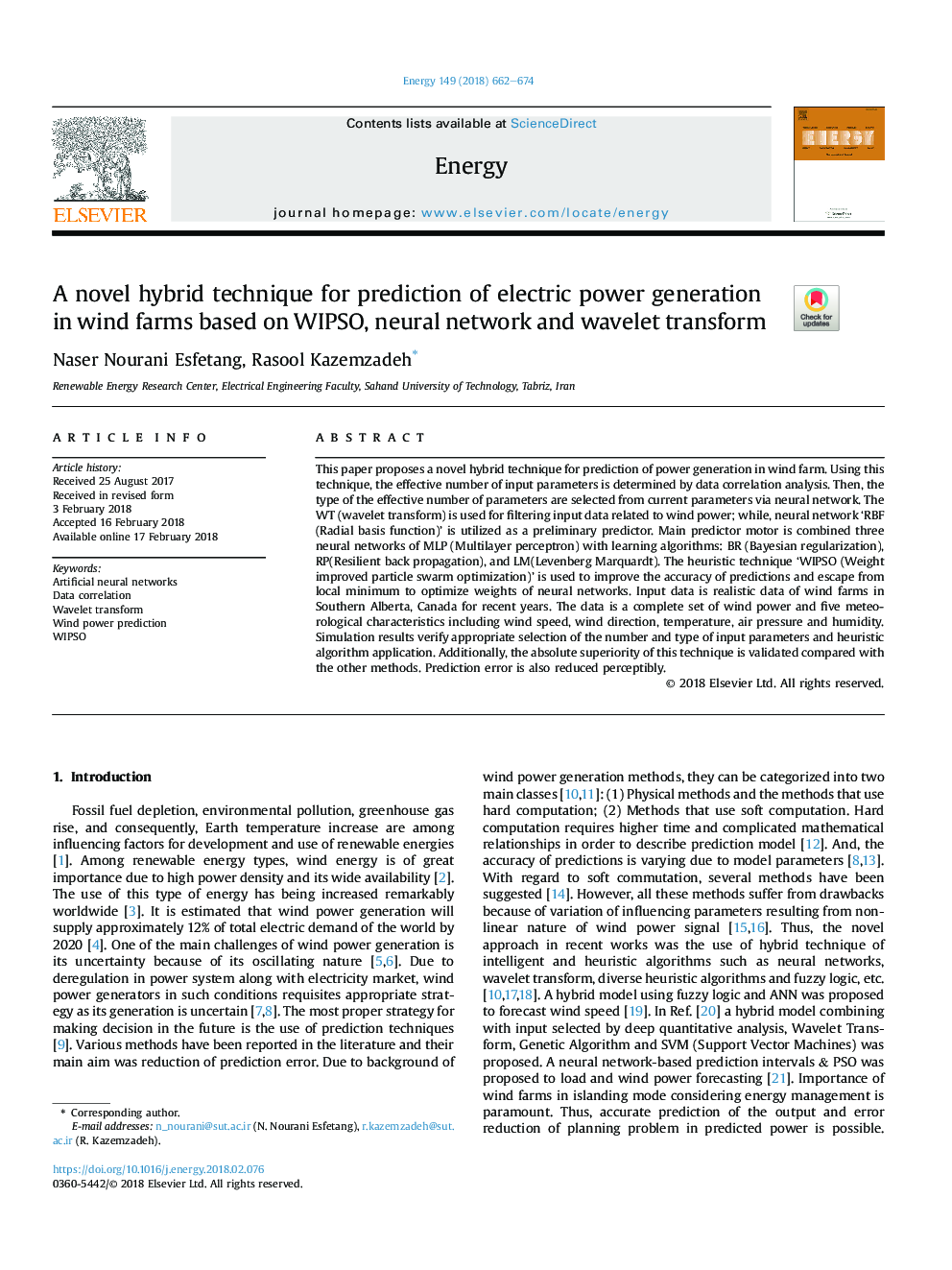| Article ID | Journal | Published Year | Pages | File Type |
|---|---|---|---|---|
| 8071950 | Energy | 2018 | 13 Pages |
Abstract
This paper proposes a novel hybrid technique for prediction of power generation in wind farm. Using this technique, the effective number of input parameters is determined by data correlation analysis. Then, the type of the effective number of parameters are selected from current parameters via neural network. The WT (wavelet transform) is used for filtering input data related to wind power; while, neural network 'RBF (Radial basis function)' is utilized as a preliminary predictor. Main predictor motor is combined three neural networks of MLP (Multilayer perceptron) with learning algorithms: BR (Bayesian regularization), RP(Resilient back propagation), and LM(Levenberg Marquardt). The heuristic technique 'WIPSO (Weight improved particle swarm optimization)' is used to improve the accuracy of predictions and escape from local minimum to optimize weights of neural networks. Input data is realistic data of wind farms in Southern Alberta, Canada for recent years. The data is a complete set of wind power and five meteorological characteristics including wind speed, wind direction, temperature, air pressure and humidity. Simulation results verify appropriate selection of the number and type of input parameters and heuristic algorithm application. Additionally, the absolute superiority of this technique is validated compared with the other methods. Prediction error is also reduced perceptibly.
Related Topics
Physical Sciences and Engineering
Energy
Energy (General)
Authors
Naser Nourani Esfetang, Rasool Kazemzadeh,
